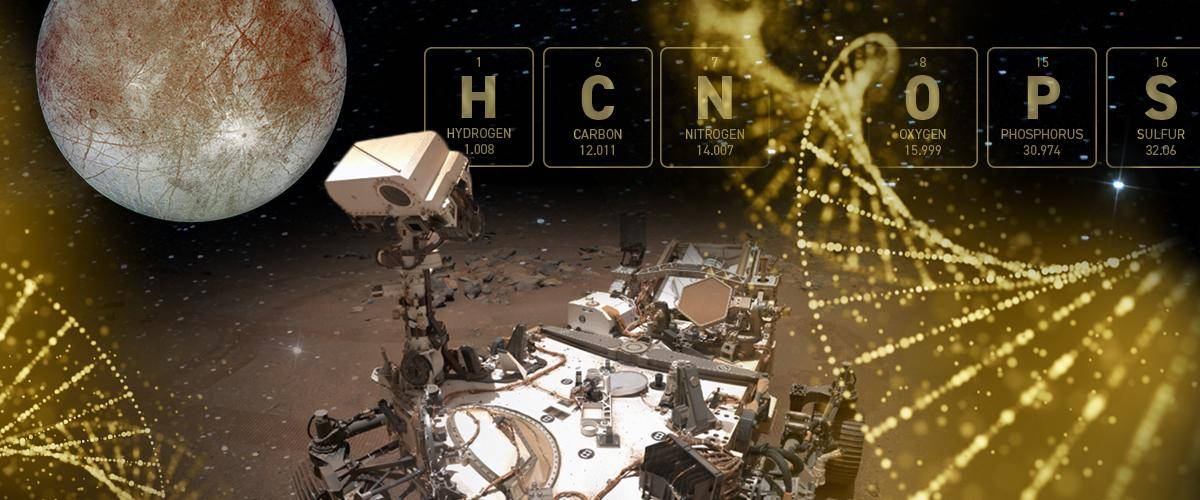Georgia Tech to host NASA, AGU, and the nation’s astrobiology community during renowned conference focused on the origins of life
Buoyed by Georgia Tech’s interdisciplinary research on the origins of life and the possibility of it beyond Earth, three researchers from the Colleges of Engineering and Sciences are the lead organizers for astrobiology’s largest national conference.

Jennifer Glass, Frank Rosenzweig, and Martha Grover represent Georgia Tech as chairs of AbSciCon 2022.
More than 1,000 abstracts will be discussed during AbSciCon 2022 May 15-20. The event takes place every two years, allowing experts to share their research, collaborate, and map the future of their field. AbSciCon, short for Astrobiology Science Conference, is hosted by NASA and the American Geophysical Union (AGU) and will take place in downtown Atlanta for 2022.
“Georgia Tech’s astrobiology community is uniquely positioned within higher education because of the Institute’s focus on breaking down silos within our research community,” said Martha Grover, AbSciCon’s general chair and a professor and associate chair for graduate students in the School of Chemical and Biomolecular Engineering. “We have the scientists to explore the origin and the potential of life on moons and planets, while our engineers can create the technology to launch and test.”
Grover is on a team recently awarded $1.5 million by the Alfred P. Sloan Foundation for that kind of collaborative research between Georgia Tech scientists and engineers. She and fellow researchers led by School of Chemistry and Biochemistry Regents Professor Nicholas Hud will develop chemical systems that evolve like those in biology — but are made up for synthetic molecules not found in life. The goal is to harness the power of evolution to produce molecules with properties that are currently unattainable.
It was Hud and Loren Williams who launched Georgia Tech’s first substantial forays into astrobiology about 15 years ago. Hud established and directed the National Science Foundation-NASA Center for Chemical Evolution (CCE). The $20 million initiative set a goal of determining the identity and origins of the molecules that gave rise to life on Earth. The project wrapped up in 2021 after a decade of work that revealed plausible candidates for the first molecules and key chemical reactions of life.
Williams, a professor in the School of Chemistry and Biochemistry who chaired AbSciCon when Georgia Tech last hosted in 2012, reconstructs ancient ribosomes, the oldest assembly in biology. He served as director of the Center for Ribosomal Origins and Evolution, part of the NASA Astrobiology Institute from 2008 to 2015. Now he leads COOL: Georgia Tech’s Center for Discovery of the Origin of Life on Earth. The center is supported by the NASA Astrobiology program.
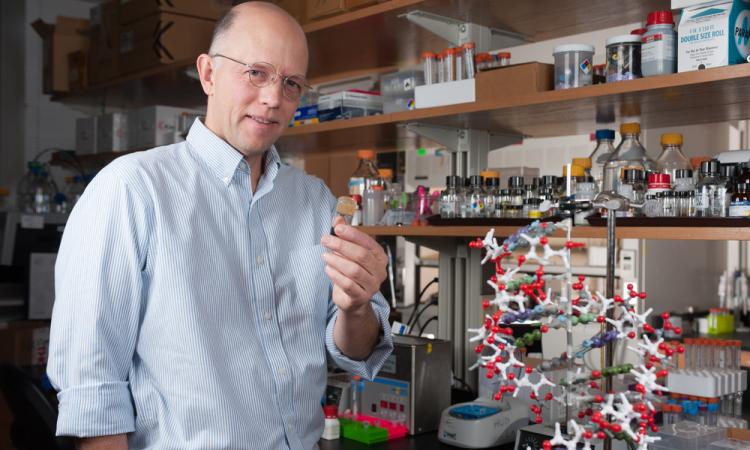
$1.5 Million for Matter-to-Life Research
An award from the Alfred P. Sloan Foundation will fund research on evolution at the molecular level.
(text and background only visible when logged in)

(text and background only visible when logged in)
Georgia Tech’s astrobiology community has evolved into additional research areas since Hud and Williams’ early initiatives.
Professor Frank Rosenzweig is the science chair of AbSciCon 2022. His work in the School of Biological Sciences is focused on the evolution of complex traits that augment biodiversity and drive major transitions in the history of life. One such transition is the evolution of multicellular organisms like animals, plants, and fungi from single-celled ancestors.
“Each of these types of organisms appear to have originated from a single eukaryotic ancestor. However, multicellularity has originated independently dozens of times across the ‘tree of life,’ suggesting that diverse genetic and ecological mechanisms enable this transition to occur,” Rosenzweig said. “In every case, the evolution of multicellularity has opened the door not only to large size organisms, but also to the evolution of cell types and a division of labor among them.”
Other Georgia Tech faculty, including Associate Professor Will Ratcliff and Assistant Professor Peter Yunker, are also carrying out research on the origins of multicellularity. Their teams have developed experimental systems to follow multicellularity as it evolves in real time in the laboratory, making it possible to elucidate its underlying genetic mechanisms, biophysics, and evolutionary advantages and disadvantages. Ph.D. students and postdocs from Ratcliff and Yunker’s labs will present their research results at AbSciCon.
(text and background only visible when logged in)

(text and background only visible when logged in)

The Lunar Flashlight propulsion system developed by the Lightsey lab (photo: Candler Hobbs)
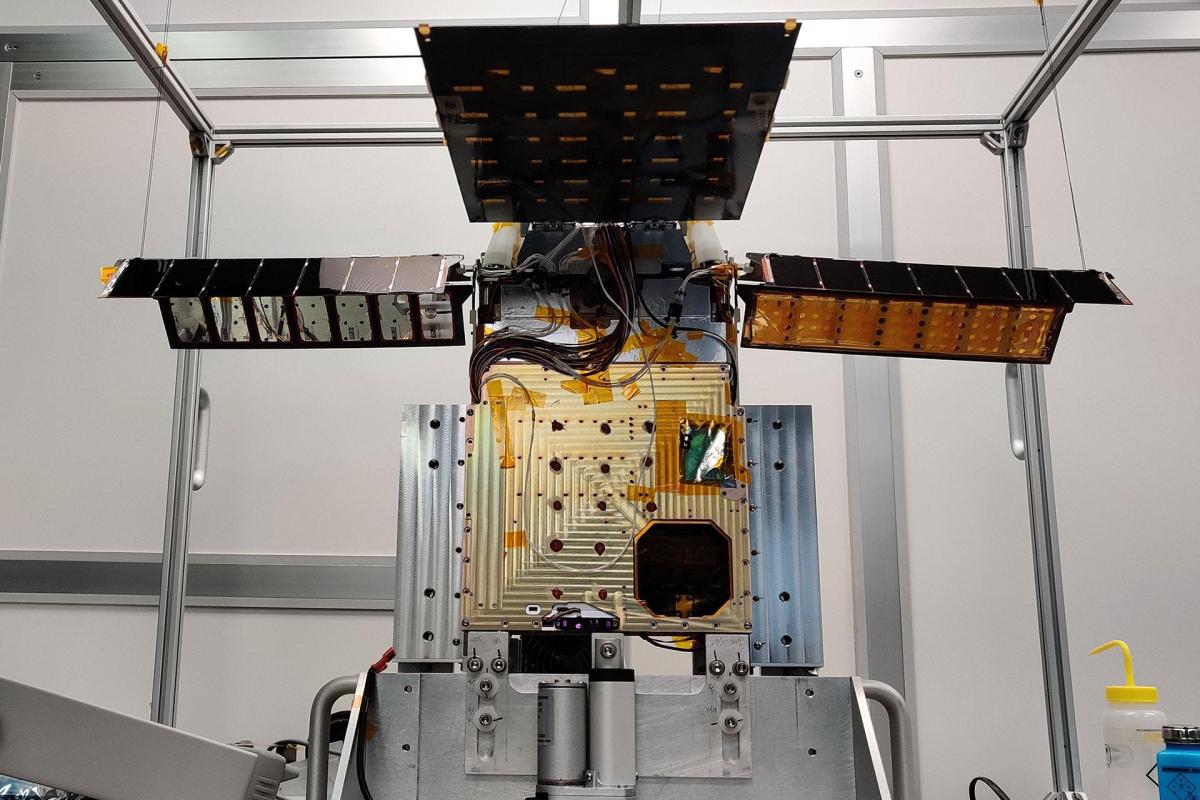
The cubesat after the solar array deployment test (photo: Conner Awald)
Others are looking for water beyond Earth. Later this year, a spacecraft assembled on campus is scheduled to launch from Florida and orbit the Moon. Lunar Flashlight will use powerful lasers and an onboard spectrometer to search shaded areas of craters at the south pole for evidence of surface ice. Its propulsion system was built by faculty, researchers, and students in the Daniel Guggenheim School of Aerospace Engineering. The AE School and the Georgia Tech Research Institute also assembled and tested the 30-pound CubeSat, which is about the size of a desktop computer will be the first spacecraft to use active laser spectroscopy to explore the Moon’s surface.
A number of other faculty are looking for water far beyond our moon. Glenn Lightsey (AE School) and Christopher Carr (AE School and the School of Earth and Atmospheric Sciences (EAS) both worked on a potential mission, to be described at AbSciCon, that would put a vehicle on Jupiter's Europa to look at that moon's subsurface lake. James Wray, an associate professor in EAS, will present twice at the conference about potential life on both Europa and Mars.


NASA's Perseverance Mars rover searches for signs of ancient microbial life and documents the martian landscape. (photo: NASA/JPL-Caltech)
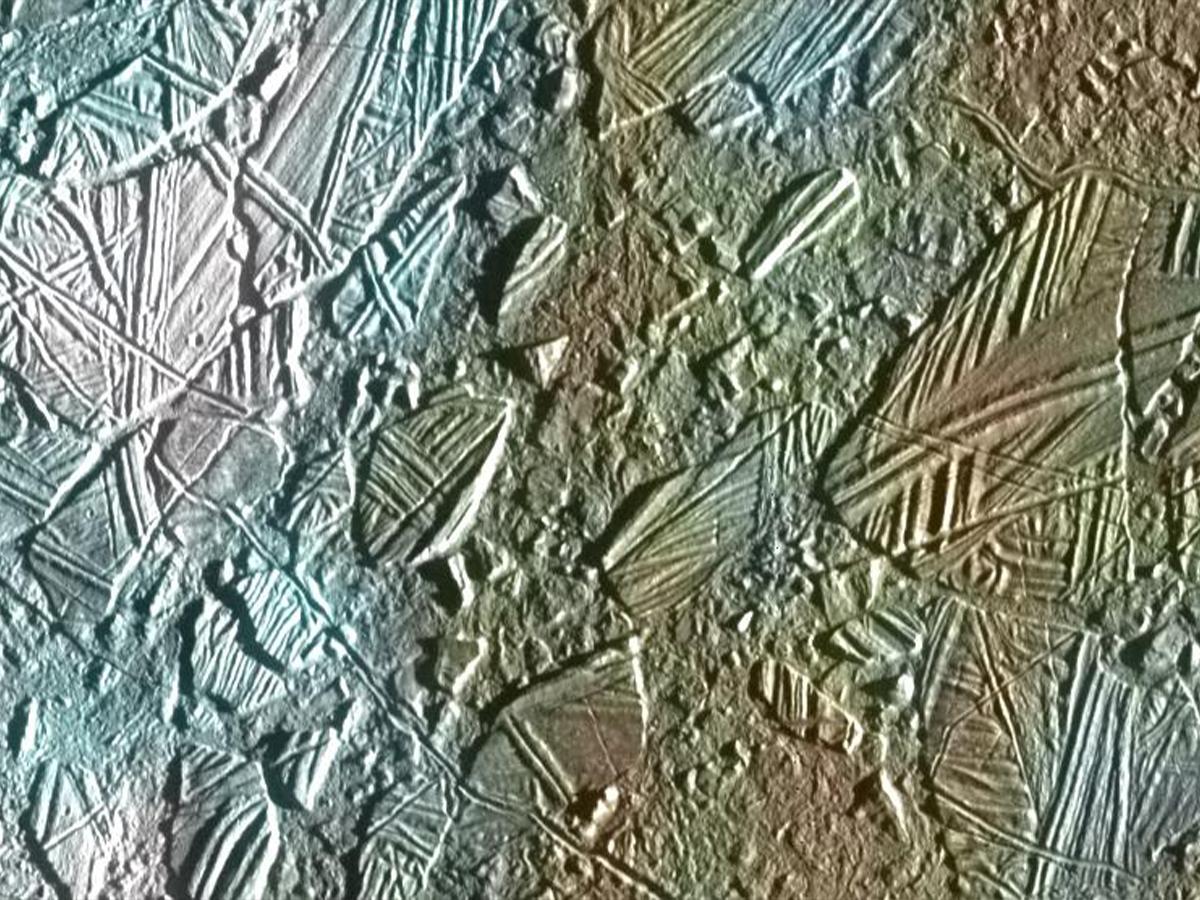
Scientists believe an ocean lies beneath the icy crust of Europa. (photo: NASA/JPL/University of Arizona)
Wray’s EAS colleague Jennifer Glass is the conference’s local organizing chair and co-director of the Georgia Tech Astrobiology Program. Her research focus is on the early evolution of life, including how methane and nitrous oxide played a role in warming the planet during its first 3.5 billion years. She also studies the habitability of gas-water hydrates on Earth and other planetary bodies. Using early-Earth knowledge, Glass and colleagues, including EAS Associate Professor Chris Reinhard, investigate the ways in which life could be evolving on billions of exoplanets spread throughout the universe.
“We are especially proud of the numerous Georgia Tech students and postdocs in our Astrobiology Program and ExplOrigins student group who will be presenting and convening sessions at AbSciCon,” said Glass.
AbSciCon will attract academics, NASA researchers, and astrobiologists from around the world to Atlanta. Among the more than 100 Georgia Tech researchers listed on abstracts is also EAS Assistant Professor and Georgia Tech Astrobiology Program Co-Director Frances Rivera-Hernández (habitability on non-Earth terrains) and School of Physics Associate Professor Gongjie Li (possibility of life on exoplanets).
Former College of Sciences postdoctoral fellow Betül Kaçar is one of AbSciCon’s featured speakers. The assistant professor at the University of Wisconsin-Madison will give a conference-wide lecture on early evolution and molecular paleobiology.
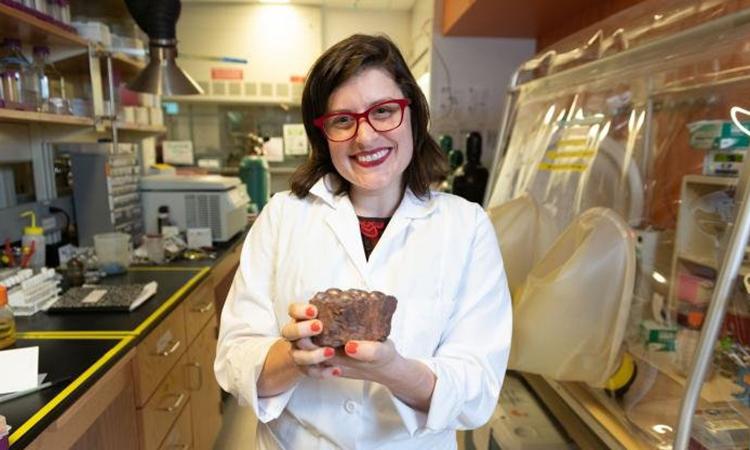
Glass, Reinhard in the Search for ‘Signatures of Life in the Universe’
The associate professors are among 20 Scialog® winners of $1.1 million in funding.
(text and background only visible when logged in)

(text and background only visible when logged in)

Lisa Yaszek

André Brock
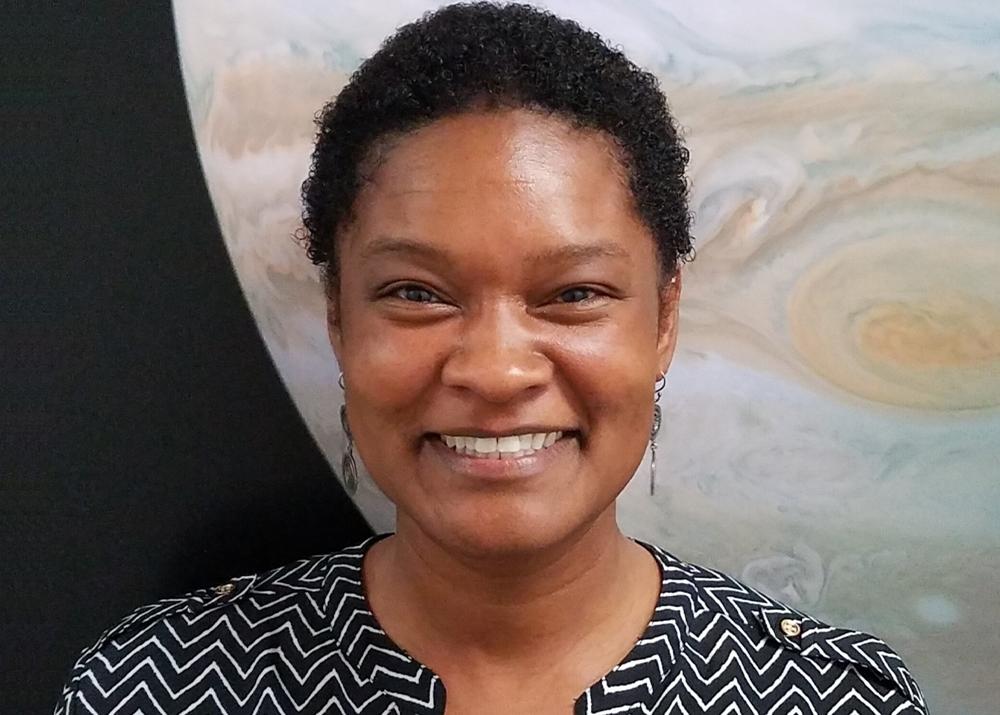
Tracy Drain
Free, Public Events
AbSciCon’s sessions are open exclusively to conference attendees. However, to include everyone interested in astrobiology, the Georgia Tech organizers have also set up three events that are free to the public.
Grover will moderate a discussion about bringing astrobiology resources to K-12 students. Lisa Yaszek and André L. Brock from the Ivan Allen College of Liberal Arts are part of a panel that will consider how the media and society would react if life besides our own is ever discovered.
“We’ll explore how ideas about alien life have been represented in the media historically and how stories about alien encounters written by marginalized peoples might provide us with new ways of thinking about first contact with other cultures,” said Yaszek, Regents Professor of Science Fiction Studies in the School of Literature, Media, and Communication.
“The liberal arts provides innovative, human-centered perspectives on science and technology. I hope the roundtables, film screenings, and public performances that we've scheduled will help scientists and artists alike think about the origins of life, here on Earth and elsewhere, from new and perhaps surprising perspectives.”
The final public event is a plenary address of Tracy Drain, who received her master’s degree from the George W. Woodruff School of Mechanical Engineering. Drain, a flight systems engineer at NASA’s Jet Propulsion Lab, works on deep space missions, including Juno, which is currently circling Jupiter.
"We are delighted to welcome NASA and the astrobiology community to AbSciCon 2022, along with aspiring scientists and engineers of all ages for this year's public events," said Dean of the College of Sciences, Sutherland Chair, and AGU President Susan Lozier. "This year's theme, 'Origins and Exploration: From Stars to Cells' speaks not only to the breadth of research discovery and solutions within our reach — but also to the collaborative, inclusive community steering the broad future of this field."
Related Content

The Center for Space Technology and Research (C-STAR)
C-STAR organizes, integrates, and facilitates Georgia Tech’s space science and technology research activities, bringing together faculty who are active in space-related research and functions.

Joint Advanced Propulsion Institute (JANUS)
Georgia Tech, along with 11 partner universities and 17 researchers, will receive $15 million over five years to enable and proliferate the flight of high-power electric propulsion systems.
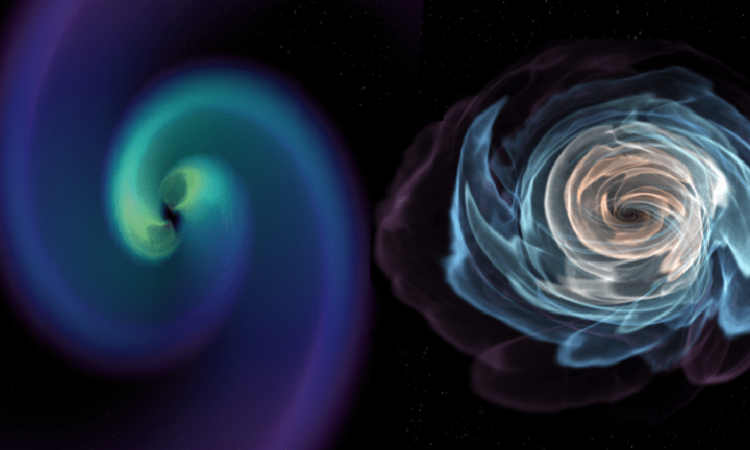
The Center for Relativistic Astrophysics (CRA)
Within the School of Physics in the College of Sciences, CRA researchers are engaged in investigations ranging from the large scale structure in the early universe to particle interactions.
